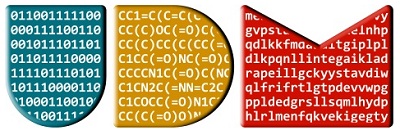The Pistoia Alliance, a global, not-for-profit alliance that works to lower barriers to innovation in life sciences R&D, announced the latest release of its Unified Data Model (UDM) file format, v5.0 Brooklyn.
The project has developed significantly since its first release in June 2018, with the latest version now customizable by individual Electronic Lab Notebook (ELN) and software vendors. The UDM format has been developed with the goal of it ultimately becoming an industry-wide standard under the stewardship of The Pistoia Alliance project team, with funding from Biovia, Elsevier, GSK, Novartis and Roche. The data exchange file format facilitates collaboration between researchers, organizations, and other stakeholders. Additionally, it advances the development of the digitally-driven Lab of the Future (LoTF) by standardizing data to unlock its value as interoperable, customizable and analyzable information.
“The UDM is the perfect example of the type of project The Pistoia Alliance was formed to work on,” commented Dr Steve Arlington, President of The Pistoia Alliance. “The project is a direct response to the data challenges our members are facing and has been developed by an impressive team for the benefit of the entire industry. We are pleased to see some important names in the life sciences world come together to work on this project.
Standards like the UDM are vital to advancing R&D and will also underpin future research – especially where we see increased adoption of AI, and machine and deep learning, which are reliant on high quality data. We now urge life sciences companies to explore how they can adopt the UDM in their organization and support greater collaboration – helping the industry to develop new, life-saving treatments for patients.”

The latest update of the UDM file format v5.0 Brooklyn includes new representation of reaction conditions and new vendor extension options allowing them to customise parts of the file format; this overcomes the existing barrier to data exchange that vendor-specific ELNs cause, by instead making data interoperable and shareable. The implementation of the UDM format provides a number of other benefits for life sciences organizations and vendors, such as more accessible data and a reduction in duplicate data. As well as accelerating research and reducing the time and cost taken to convert data, the new format will help ensure a consistency and quality of data which is necessary to support AI and machine learning efforts, as well as offering standards that will be invaluable in the development of Lab of the Future.
“This new release of UDM offers improved representation and validation of reaction data,” commented Dr Roman Affentranger, Head of Small Molecule Discovery Informatics at Roche, and UDM Project Champion. “Widespread adoption of the UDM standard has the potential to improve collaboration and data exchange across the entire life science industry.”
“It’s fantastic to see we have reached the next stage of the UDM project so quickly, and I’m pleased to have been able to work with my peers on the development of this data exchange format,” commented Tim Hoctor, Vice President, Professional Services at Elsevier and board member of The Pistoia Alliance. “Elsevier is wholeheartedly behind the UDM project, because we understand how much our customers and most importantly, patients, will benefit from greater sharing of data in the life sciences. We are looking forward to seeing how the UDM continues to develop and support the growing life science dataset, which is so vital to the future of successful R&D and healthcare. The collaboration opportunities that these types of project provide are so important to progressing as an industry.”
Building on the significant number of improvements to the UDM format, the project team is continuing development with the next release planned for Q2 2019
About The Pistoia Alliance:
The Pistoia Alliance is a global, not-for-profit members’ organization made up of life science companies, technology and service providers, publishers, and academic groups working to lower barriers to innovation in life science and healthcare R&D. It was conceived in 2007 and incorporated in 2009 by representatives of AstraZeneca, GSK, Novartis and Pfizer who met at a conference in Pistoia, Italy. Its projects transform R&D through pre-competitive collaboration. It overcomes common R&D obstacles by identifying the root causes, developing standards and best practices, sharing pre-competitive data and knowledge, and implementing technology pilots. There are currently over 100 member companies; members collaborate on projects that generate significant value for the worldwide life sciences R&D community, using The Pistoia Alliance’s proven framework for open innovation.

















![Sirio Launches Global Research Institute for Longevity Studies [SIA]](https://www.worldpharmatoday.com/wp-content/uploads/2019/09/Sirio-218x150.jpg)

